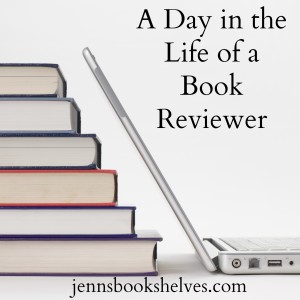I do not care much for plot, so I am not a writer of plot driven work. There. I said it. This is part of the longstanding discourse between me and my agent. He (rightfully) insists that plot sells, and I (more rightfully) insist that I do not care. That is of course not entirely true. I do care. I want to sell my work. I want an audience, a following. I want readers who will delight in what I have to say, but it is a dilemma because I do not think in plots or see a story unfold in my head. I don’t suddenly get a great idea for a story and plan the details with precision. Nor do I have the ability to construct a story with intricate sub-plots and dynamic characters that each has the ability to move the story forward with compelling speed and grace. It is one of my dirty little secrets: I don’t do plot. I do words, images and feelings, but I don’t do plot.
So, how does a writer who wants to be published survive in this market? Do you succumb to pressure? Do you abandon your commitment to your craft and create a story with a legitimate beginning, middle and end? Do you create conflict and shape characters that are prepared to take on the challenges of the plot and solve them with stunning insight and grace? The answer to all the questions is: Yes, but not really. I wrote The Sinner’s Guide to Confession because I knew I needed to write a more plot driven book if I wanted to get back into the market. I had meandered my way through several manuscripts that, though inarguably well-written, were deemed unmarketable by well-intentioned and savvy editors (what do they know anyway?) who encouraged my agent to encourage me to write a plot-driven book. I refused. I held my ground. It was sort of like my stubborn determination to resist an epidural after twenty-some hours of really hard labor. My obstetrician of many years finally said, “We know each other a long time, Phyllis. Is there any reason I don’t know about that you might have for wanting to be in excruciating pain?” Truthfully, I was more interested in the fact that he had called me “Phyllis” than I was in anything else. After a three-way with the good doctor and my husband (no, not that kind of three-way), we decided it was time for me to take an epidural. My pressure was elevated, and the epidural was the least invasive route. Mind you, once I had that epidural, I never took my eyes off the vial taped to my chest. As soon as the medication came near the vicinity of the line that marked the time for a refill, I screamed, “Get the doctor!” What relief. My point is that sometimes you just have to give in or give up. I never give up.
I justified my decision to write a plot driven book by telling myself that whatever I write will be good. I invented a mantra: I will always honor my craft. I will always strive for excellence. I will write to please myself even if there is a plot. I repeated my mantra each time I sat down to work on The Sinner’s Guide to Confession, and it worked. I believe I wrote a well-crafted and well-written novel. . . . with a plot. I believe I managed to intercept complete acquiescence by weaving in intermittent indulgences to language, my first true love.
I am in love with words. It is an addiction borne of a lifetime of reading. I marvel at the one sentence in a novel that seems to dance off the page. The line that makes readers gasp with recognition. That is what I want to accomplish, and the only way to achieve that is with words, with language, with the ability to configure words in such a way that they have the power to arrest the reader’s attention. It is possible to achieve both a great story that uses wonderful language to tell it, but I think it is rare. My writing mentor, Hayes Jacobs, used to tell me that every writer should read Madame Bovary by Gustav Flaubert every year. Hayes believed it was among the greatest literary achievements ever produced. I have read and reread Madame Bovary each time with renewed delight. The power of Madame Bovary reminds me of a conversation I had with a dear friend, an artist of great accomplishment and renown, who after he returned from Italy where he saw, for the first time, the works of Michelangelo said, “I have to work harder.”
Willing Spirits is a quiet book that explores its characters more deeply than it pays attention to the plot. I know this, and I don’t mind. I am in love with the language of the book. I adore the well-placed ramblings that do not seem to have any greater purpose than to bring some character illumination and to delight. That seems like quite a lot to me.
Sometimes it is necessary to yield. I yielded to an epidural in spite of months of preparing for an “all natural” birth. My child’s health was at risk, and he needed to be born. I avoided a Cesarean and, with my doctor’s skill and forceps, delivered a healthy eight-and-a-half pound, twenty-one inch beautiful baby boy. My doctor reassured me that I had made the right decision. My son’s head had been stuck behind m pubic bone, and he needed help. I yielded when I listened to my agent and wrote a plot driven book. I struggled with the decision, but I am glad I made it. The Sinner’s Guide to Confession is a fine book, and I am proud of it. Nevertheless, Willing Spirits is a reflection of my great love for words, for how they can be strung together to make sentences that seem so right. I am still on the journey, still working to bring the two worlds—plot and language—together in way that will be memorable. Like my friend, I know that I just have to work harder.
________________________________________________________________
Check back later for my review of Willing Spirits. My apologies to the author–my son’s were under the weather yesterday, preventing me from completing and posting my review yesterday.






0 Responses to Author Guest Post: Phyllis Schieber, Author of Willing Spirits